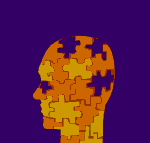 Brain Health and Balance
Brain Health and Balance 
“How important is exercise to my brain health?”, you may ask.
“Such exercise lowers your odds of getting the disease [Alzheimer’s] by more than 60 percent.” – –John Medina, author of Brain Rules
That’s immensely effective and important.
So, now the question is: What type and how much exercise? The next 3 posts will address this issue.
Part 1: Benefits: What can exercise do for the brain?
Part 2: Minimum: Minimum Physical Exercise for My Brain? – What type and how much?
Part 3: Best Brain Exercise: Enriched/Challenging environment exercise. (Minimal vs getting the most benefit)
Just out this year (2014), is a thorough review of 27 studies about the effects of physical exercise on the brain(1). Here, we learn that…wait for the drum roll…exercise is IMMENSELY good for your brain. That may not be a surprise, but the enormity of those benefits may be a surprise. Today I talk about those benefits. In the following days, I will talk about the specific types and duration of exercise needed to achieve those benefits.
Lately we have talked about dementia and Alzheimer’s.
- Cut your risk for all forms of dementia by 50% and your risk of Alzheimer’s by 60% – Regular, leisure exercise 2x per week.(2).
- If you walk 20 minutes every day, you reduce your risk of stroke by 70%(2) . That’s amazing!
- Faster working brain = Cognitive speed 26,27
- Ability to control impulses = Cognitive inhibitory function 21
- Makes brain cells grow = Physical exercise promotes positive neuroplasticity
- Increases “extra” brain tissue that continues normal brain function even when other brain damage or loss has occurred = Cognitive Reserve.
- More nerves talking to each other = higher neuronal connection density, and results in improved cognitive function. 34,35
It’s also good to know what studies have shown results form LACK of physical activity.
- Loss of nerve development = Negative neuroplasticity results from:
- physical inactivity,
- poor nutrition,
- substance abuse,
- social isolation
- Loss of nerve development will mean:
While we are on the topic, let’s discuss how physical activity seems to have its effect.
 One effect is called “neuroprotection.” That means the brain cells are protected. Since brain function decline often involves low blood flow to the brain.39 Higher brain blood flow speed seems to result in less brain function decline and lower brain blood flow speed was related to Alzheimer’s disease.40
One effect is called “neuroprotection.” That means the brain cells are protected. Since brain function decline often involves low blood flow to the brain.39 Higher brain blood flow speed seems to result in less brain function decline and lower brain blood flow speed was related to Alzheimer’s disease.40
We have known for a long time that long-term aerobic exercise to decreases the effects of blood flow disease problems 41. so, it may well be that exercise improving blood flow is a big part of the solution . Exercise also stimulates the production of nerve growth chemicals, called neurotrophins.42,43
BDNF, a chemical we like to call Miracle-Gro for the brain, is probably a big factor in both preserving and promoting brain function. Many studies are done on rodents, but this has been shown in humans also.45
- Decreased levels of BDNF (aka Miracle-Gro) associated with decreased brain volume (specifically in the memory/smell center, hippocampus)
- and that aerobic exercise increased BDNF, hippocampal and temporal lobe volumes, and spatial memory.
Even short bursts of exercise have shown profound ability to stimulate the brain function. A short burst of exercise in people that had some serious memory problems (aMCI), exercise effects were described as “striking.” In fact, there was a greater effect in the brain-troubled group than in people without memory problems, a nearly 200% improvement over the non-exercise group.(3)
Risk Factors and What and Why it works
http://www.ncbi.nlm.nih.gov/pmc/articles/PMC3647614/
Risk Factors – Up to half of AD and dementia cases worldwide may be attributable to potentially modifiable risk factors.
Low education contributed to the largest proportion of AD cases worldwide. This theory is supported by neuropathological studies which show that many older adults with normal cognitive function meet neuropathological criteria for AD at autopsy.68 Similarly, AD biomarkers appear to be less predictive of development of AD in those with high cognitive reserve.77
Smoking contributed to the second-largest number of AD cases globally, possibly due to it causing heart disease and stroke, hundreds of chemicals that are known to be neurotoxins and could contribute to AD risk through oxidative stress or inflammatory processes.79
Physical inactivity contributed to the largest proportion of AD cases in the US and the third-largest proportion globally. Since physical inactivity is associated with most of the other AD risk factors identified—including depression, mid-life obesity, mid-life hypertension and diabetes—public health initiatives to increase physical activity levels throughout life could potentially have a dramatic impact on dementia prevalence over time.
Some types of exercise have specific brain benefits.(4)
- Attention and Conflict resolution in older women improved in resistance training, but cognitive abilities associated with manipulating verbal information in working memory and shifting between task sets or instructions were not improved.
- It also may have somewhat different effects for men and women: 7 moderate- or high-intensity resistance training improved memory and verbal concept formation among senior men.
 A 13-week program of vigorous exercise with school children resulted in dramatic effects(5).
A 13-week program of vigorous exercise with school children resulted in dramatic effects(5).
- Executive function, that means they could regulate their behavior better (e.g., inhibiting inappropriate responses, delaying gratification) — all stuff very important for a child to succeed in elementary school. You could also read that as LESS ADHD.
- Mathematics ability – That was cool, because they didn’t have any more math practice than the ones not exercising.
Adults can also learn better. And Learning is improved with short bouts of exercise in adults. (6)
Of course, there is more, but that’s all for today. Next time, we will fill in some blanks with what type of exercise to do.
References:
- 27-study review – http://www.ncbi.nlm.nih.gov/pmc/articles/PMC3990369/
- Dementia and Alz Risk reduction: http://www.thelancet.com/journals/laneur/article/PIIS1474-4422(05)70203-9/fulltext#bib1
- Exercise improving short-term memory: http://www.ncbi.nlm.nih.gov/pmc/articles/PMC3951984/pdf/nihms498587.pdf
- Specific brain benefit: http://archinte.jamanetwork.com/article.aspx?articleid=415534 (study of women)
- 13-week exer with children: http://www.ncbi.nlm.nih.gov/pmc/articles/PMC3057917/
- Adults learning better: http://www.plosone.org/article/info%3Adoi%2F10.1371%2Fjournal.pone.0064172




